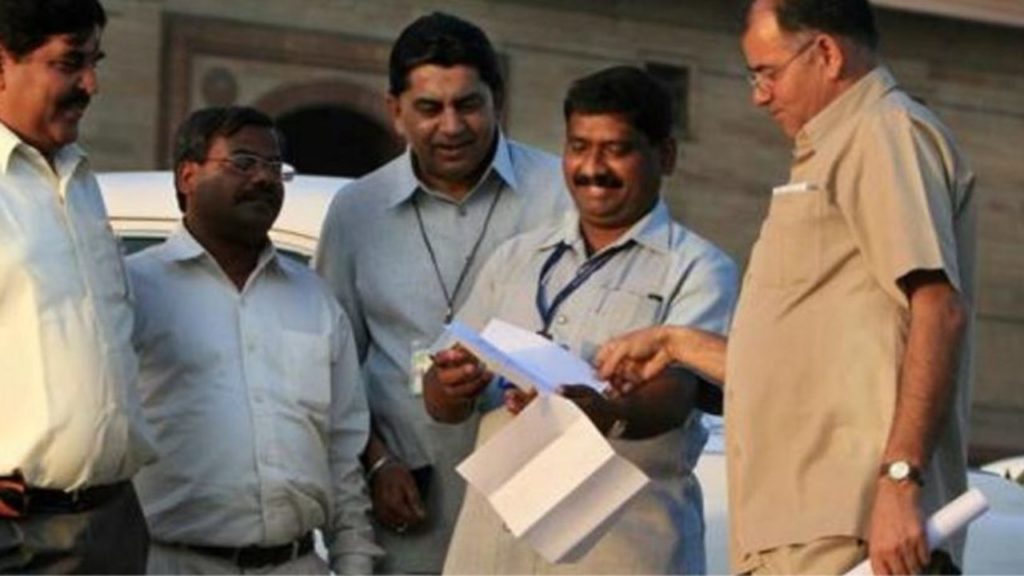EPF By Employees, Employers Reduced; This Is How Your Next Salary Slip Might Appear

EPF By Employees, Employers Reduced; This Is How Your Next Salary Slip Might Appear
The finance minister Nirmala Sitharaman on May 13 reduced statutory deductions on Employees’ Provident Fund (EPF) contributions for both formal sector employers and employees by a total of 4%, for the May-July period.
This temporary relief to increase in-hand salary during COVID-19 pandemic crisis will benefit around 6,50,000 companies with liquidity of around Rs 2,250 crore every month.
Read to find out more…
Reductions in EPF Contributions Explained!
According to the social security laws, employees and employers deposit 12% each, or 24% of the basic salary and a Dearness Allowance (DA) as EPF deductions every month for the retirement kitty maintained by the Employees’ Provident Fund Organisation (EPFO).
The contributions to the EPF have now been reduced to 10% each for 3 months. The statutory deduction has been cut by a total of 4% (2% of employer’s contribution and 2% of employee’s contribution).
However the employees of central public sector enterprises and state Public Sector Undertakings (PSU)s will continue to pay 12% of the employers share whereas employees will pay 10%. Besides, Sitharaman said the government will pay the EPF contribution of both the employer and the employee (12% each) for three more months for companies with a headcount of less than 100, and where 90% workers earn less than Rs 15,000 per month.
Sitharama said, “Businesses need support to ramp up production over the next quarter. It is (also) necessary to provide more take home salary to employees and also give relief to employers in payment of provident fund dues. Therefore, statutory PF contributions of both employers and employees will be reduced to 10% for all establishments covered by EPFO for the next three months.”
She added saying this will be applicable to all workers, or nearly 43 million employees across 650,000 establishments, who do not benefit from the PM Garib Kalyan package announced in March.
The move also provides a Rs 6,750 cr liquidity support to employers and employees during the COVID-19 pandemic.
Confusions With Employer’s EPF Contributions?
This relief measure will have twin benefits:
- A reduction in employee costs for private companies,
- Employees’ take-home pay will increase by 2%.
While the 2% of your EPF contribution would invariably land in your take home pay but there is still some confusion about what will happen to the employer’s 2% contribution to EPF.
Usually, the break-up of your CTC (cost to company) or total salary package includes the 12% contribution to be made by the company on your behalf in your EPF account. Now since the government has reduced the mandatory 12% requirement, some employers might not pass on the benefit of the remaining 2% to their employees.
If some employers choose to give the employees the benefit of only 2% (employee’s contribution), then it may lead to a net reduction of 2% equivalent to your basic salary and DA for 3 months. Others might argue that since the 12% employer’s contribution is part of the CTC, the company is liable to pass on the benefits of EPF cut to the employee.
Alok Agrawal, Partner, Deloitte India, said, “In case of those private sector organisations where employer contribution to PF is included as part of the employee’s ‘Cost-to-company’ package (CTC) and where the employer has otherwise not made any cuts to fixed pay due to the COVID impact, the employees may expect to be compensated for this reduction in PF contribution by way of an equivalent cash allowance.”
However, he said it remains to be seen from the final PF notifications to be issued by the authorities, if certain employers will have an option to continue maintaining the same 12% contribution, if their financial position permits.
Will this measure really provide relief or cause more complications?

Comments are closed, but trackbacks and pingbacks are open.